Chicken Biryani that’s easier to make than you might think! This recipe tackles many common pitfalls, ensuring tender, juicy, marinated chicken and aromatic, fluffy basmati rice boasting an irresistible depth of flavor without overpowering your palate. So, follow along for tips, tricks, and step-by-step photos to bring restaurant-quality results to your kitchen!
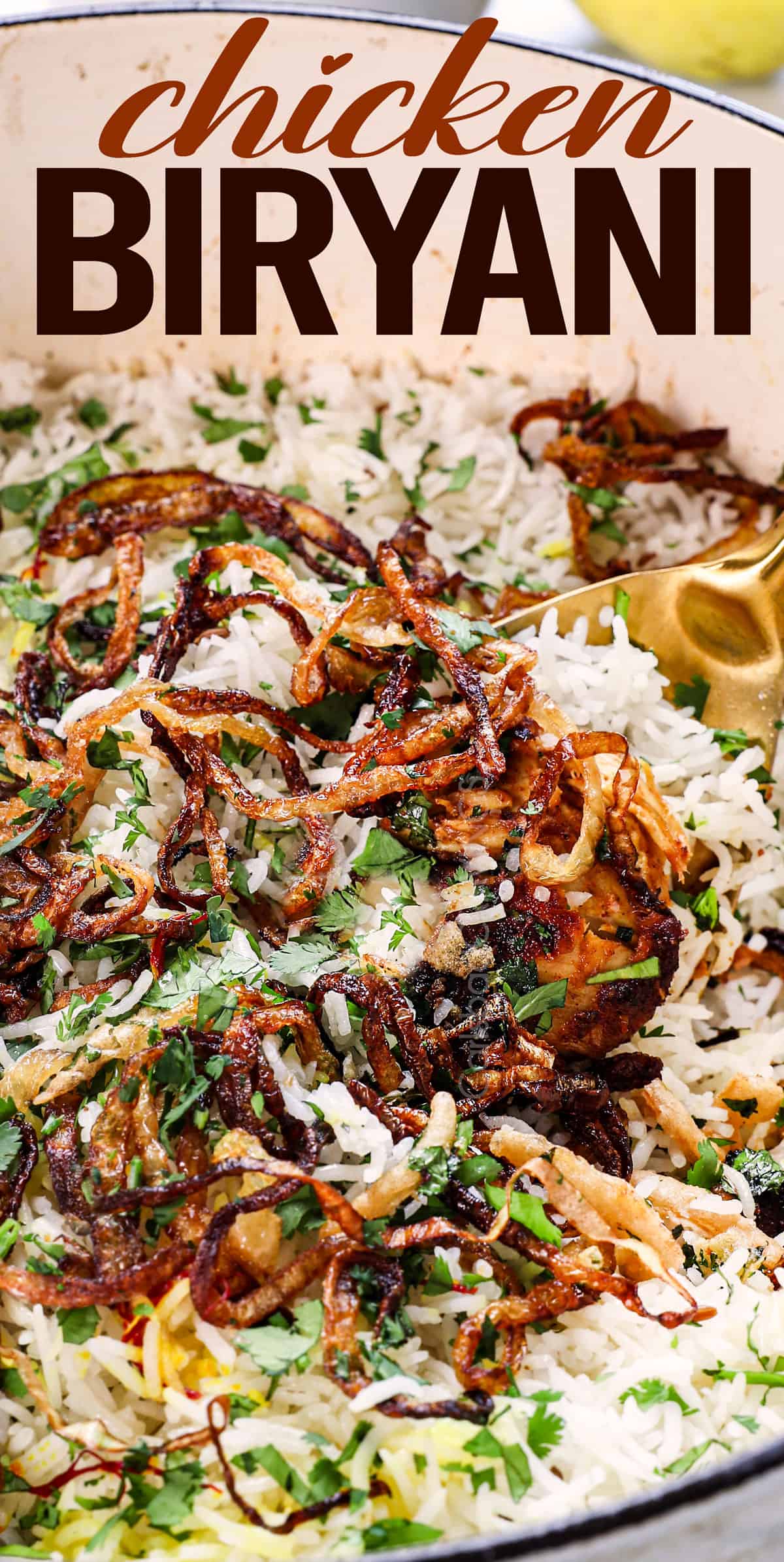

What is Biryani?
Biryani is a delightful explosion of flavors that originated in the Indian subcontinent. It is made by layering marinated meat (such as chicken, mutton, beef, or fish) or vegetables with partially cooked, fragrant basmati rice and cooking them together with a blend of bold spices like saffron, cardamom, cinnamon, cloves, and cumin. Fried onions, mint, and cilantro are also popular in Hyderabadi Biryani, which is the version I’m sharing with you today.
The dish is known for its unique method of cooking, often referred to as “dum,” where the pot is tightly sealed to trap steam, allowing the flavors to meld together. Biryani has many regional variations, including Hyderabadi, Lucknowi (Awadhi), Sindhi, and Kolkata biryani, each with distinct spices and cooking techniques. Biryani is typically served with accompaniments like raita (yogurt sauce), pickles, and salad. The rich layers of taste and texture make biryani a satisfying and exciting dish that’s both comforting and exotic simultaneously!
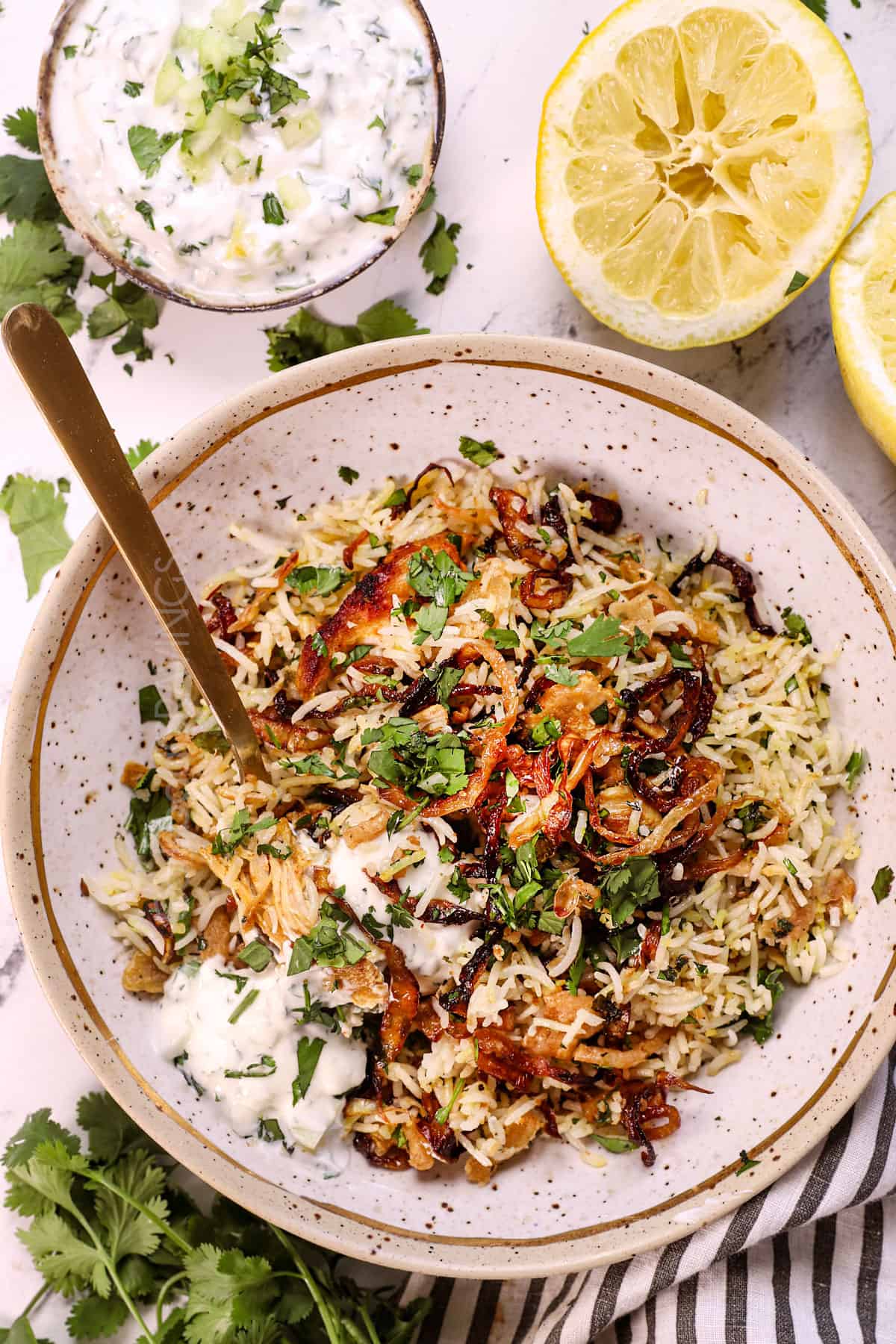

Why you’ll love Biryani Chicken
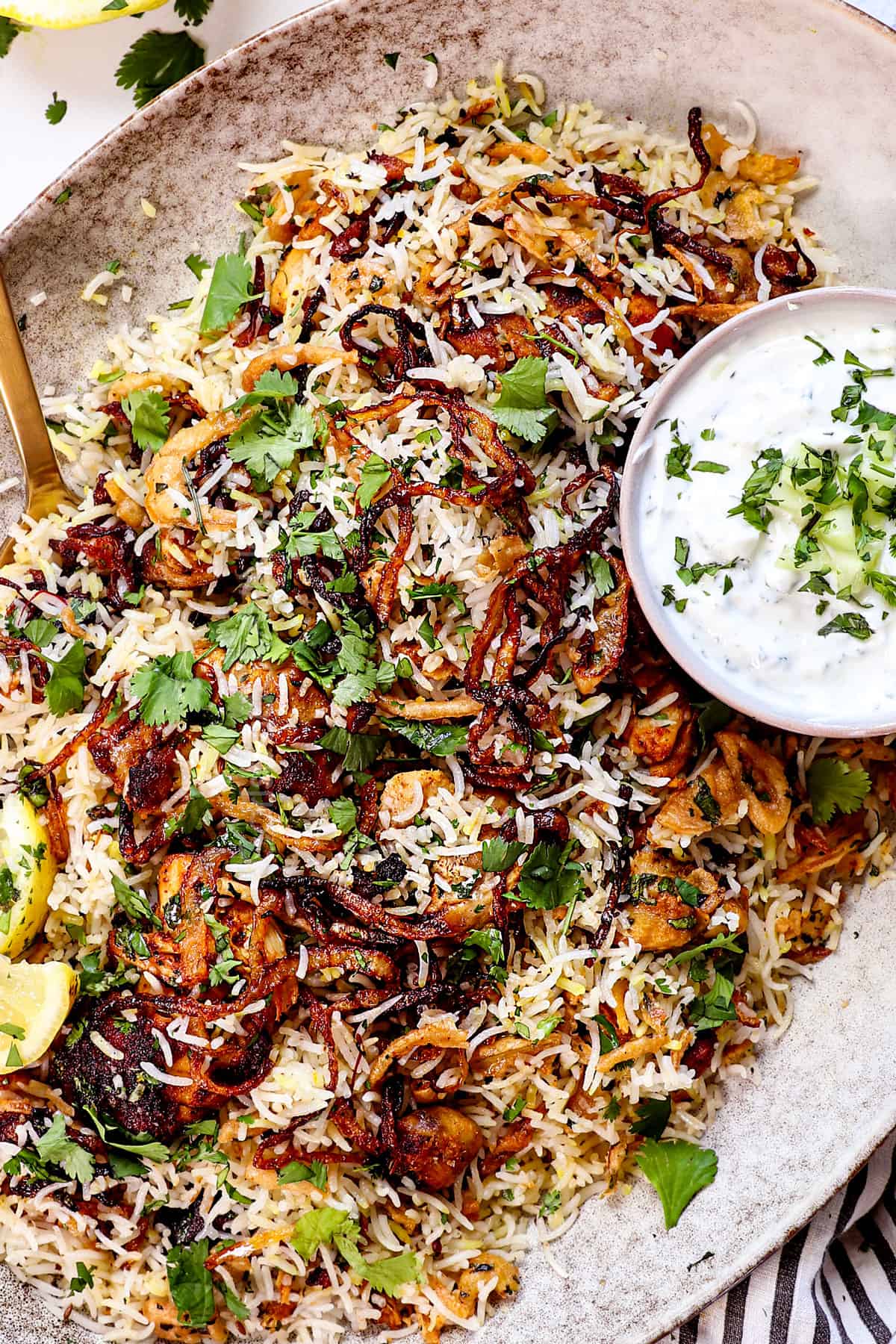

Chicken Biryani ingredients
Many ingredients are involved in making biryani, but please don’t be overwhelmed-many of them simply get dumped together! The ingredients can be divided into three stages: 1) the chicken marinade, 2) the par-boiled rice, and 3) the layering. Let’s take a closer look at what you’ll need for each stage (measurements in the printable recipe card at the bottom of the post):
For the chicken marinade

CAN I Use Chicken Breasts?
Please do NOT use chicken breasts! They will overcook and dry out and you will be sorely disappointed.
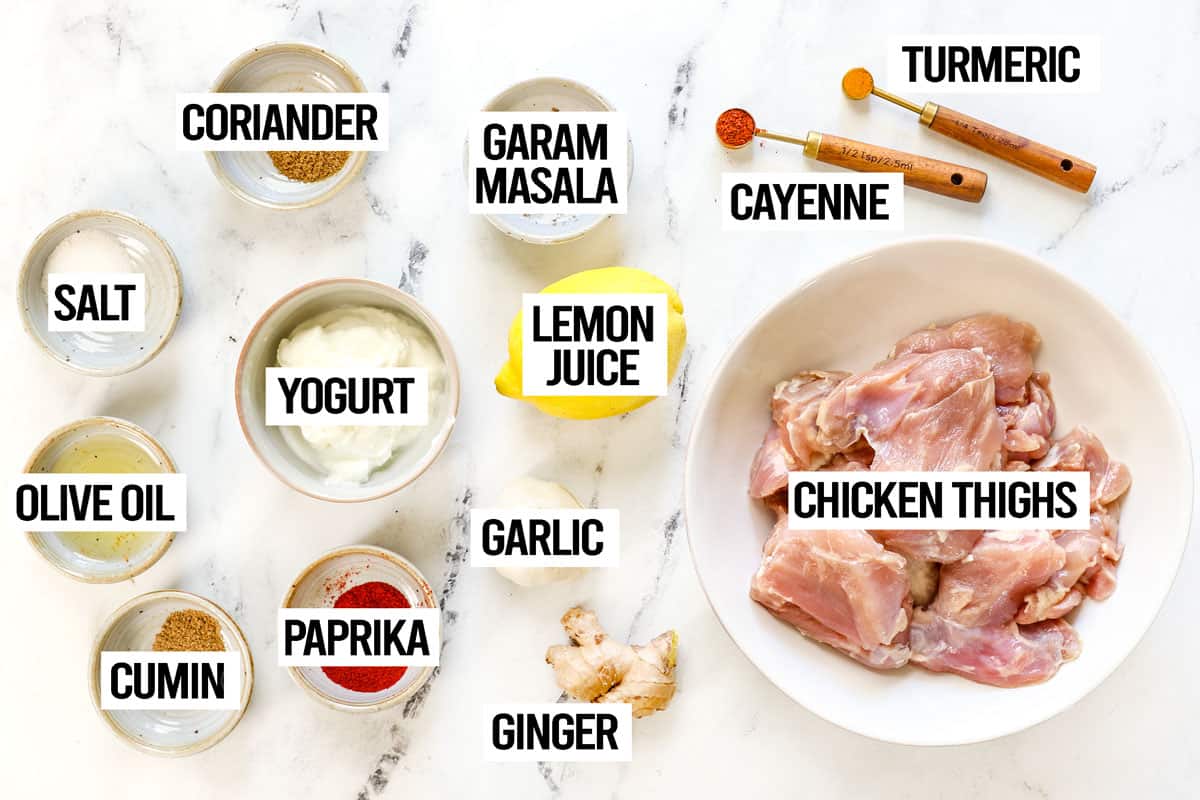
For the Par-Boiled Rice
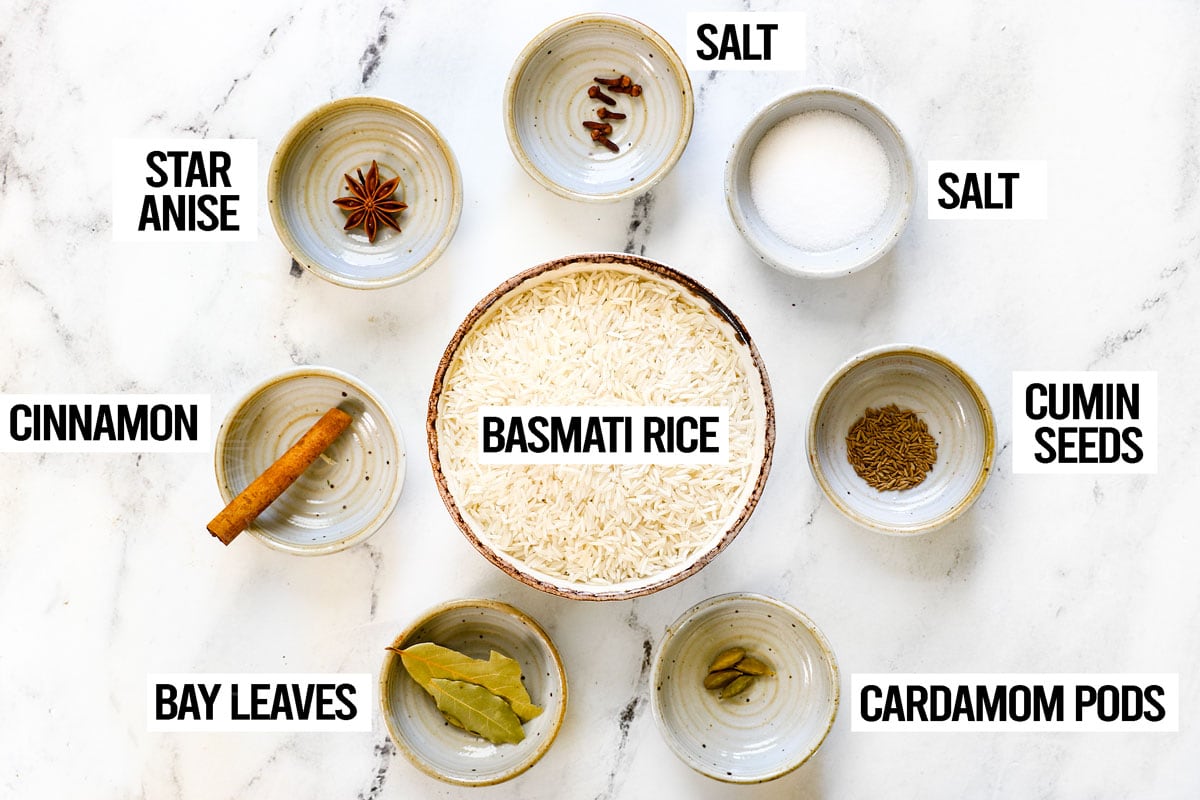
For Layering


How to make Biryani
Let’s take a closer look at how to make biryani with step-by-step photos (full recipe in the printable recipe card at the bottom of the post):
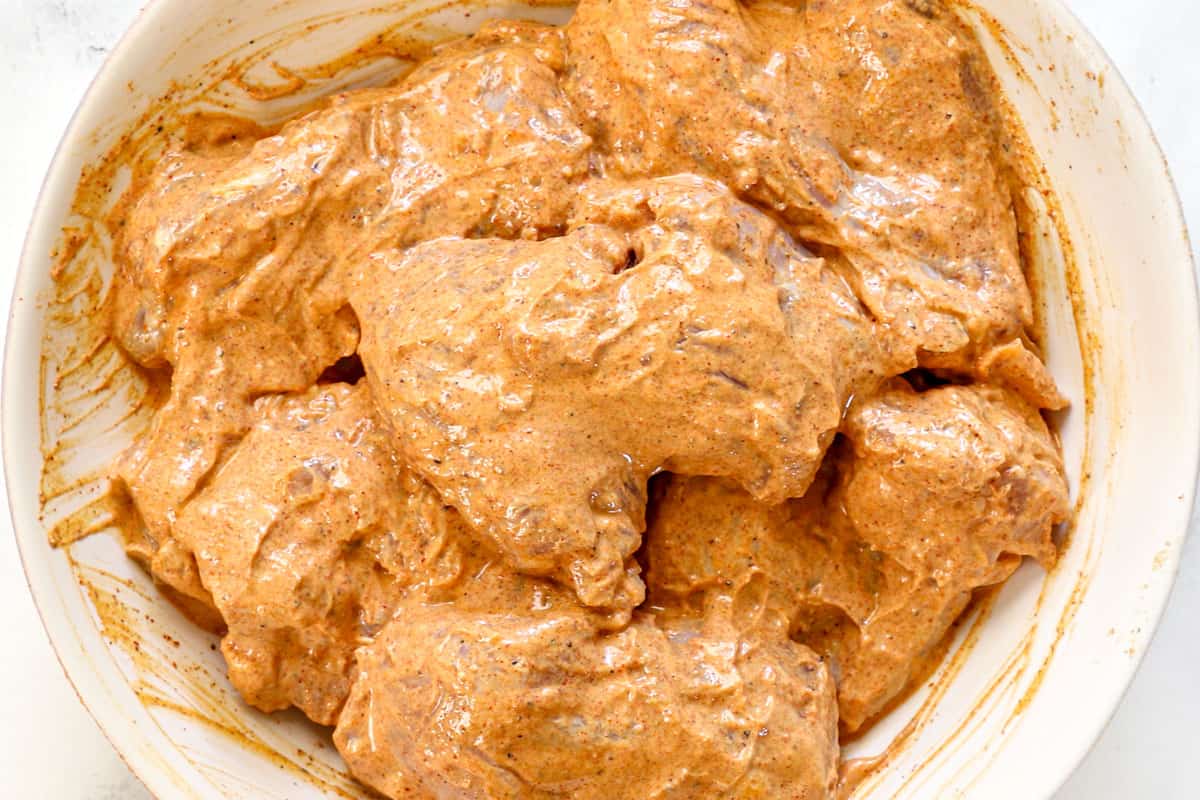
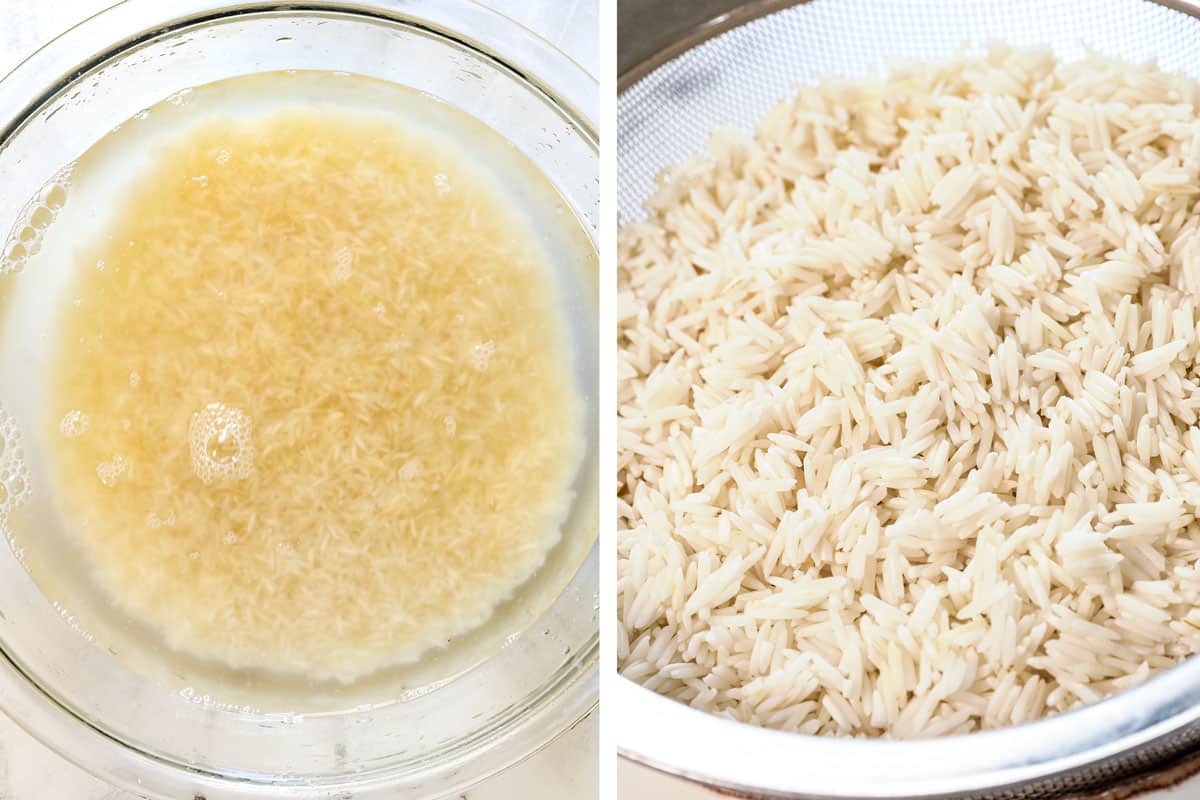
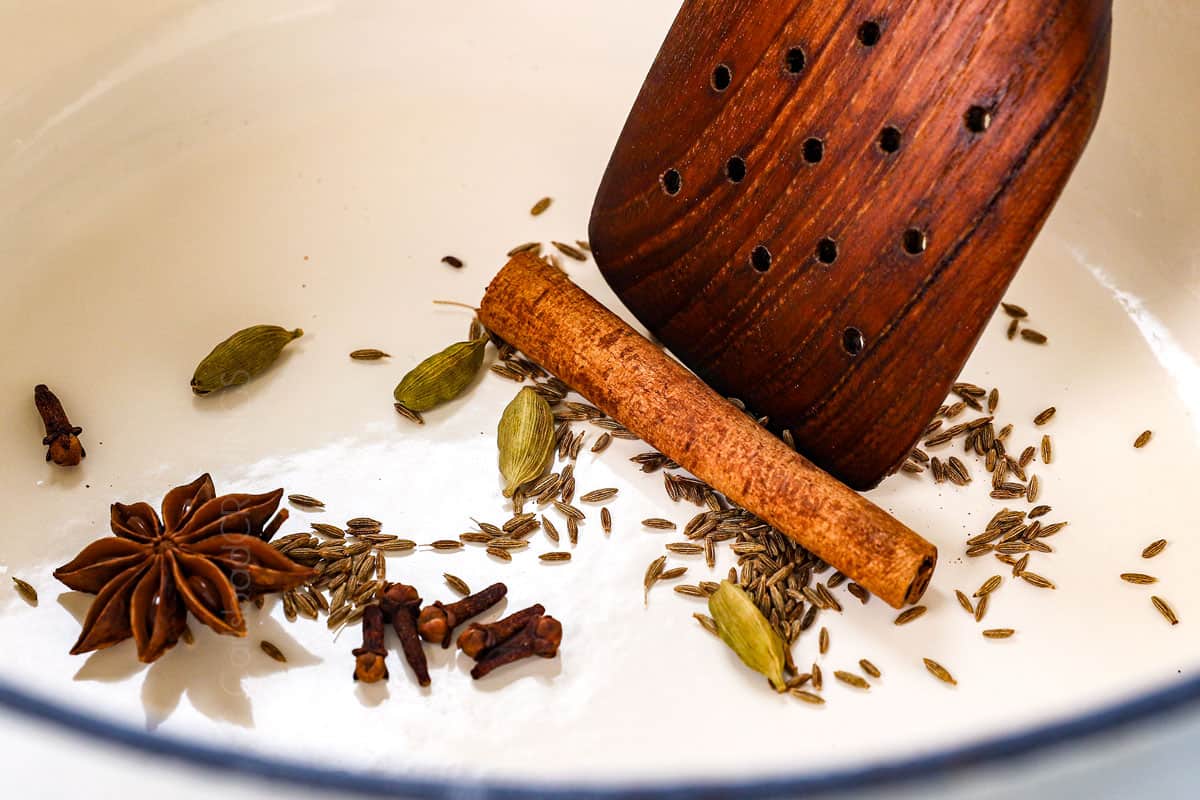
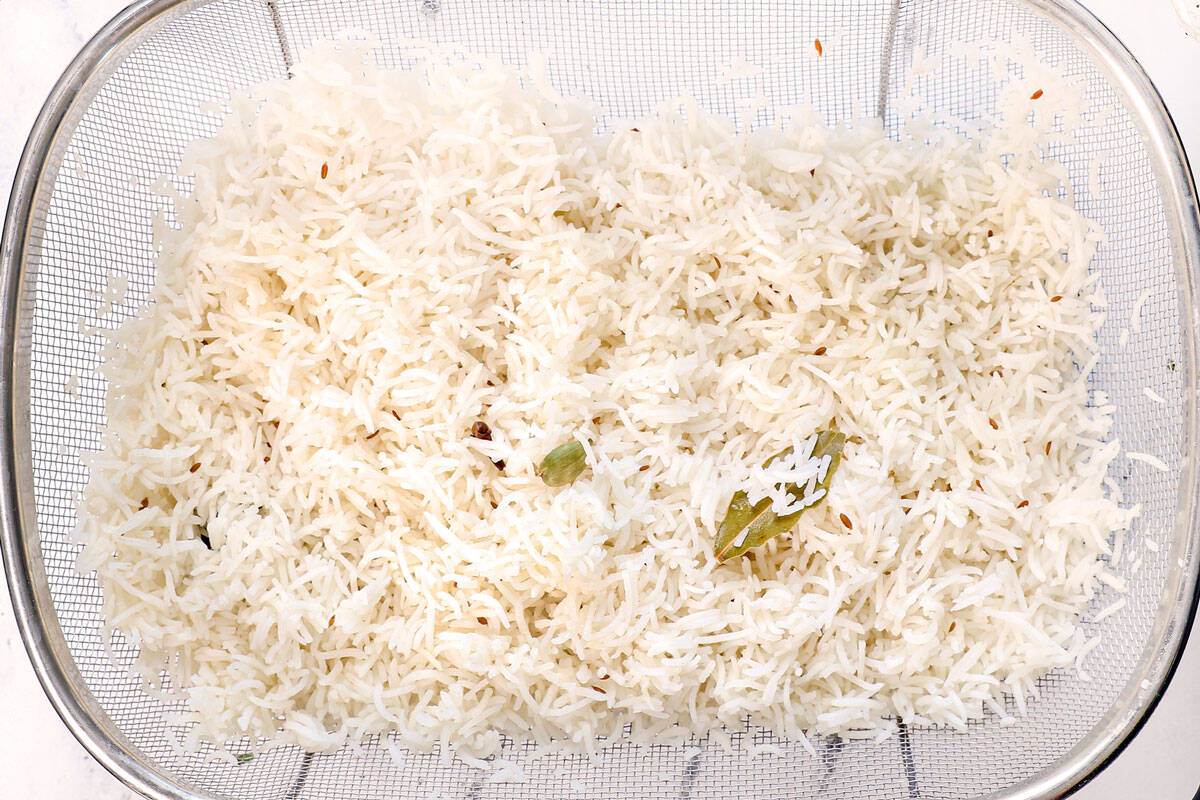

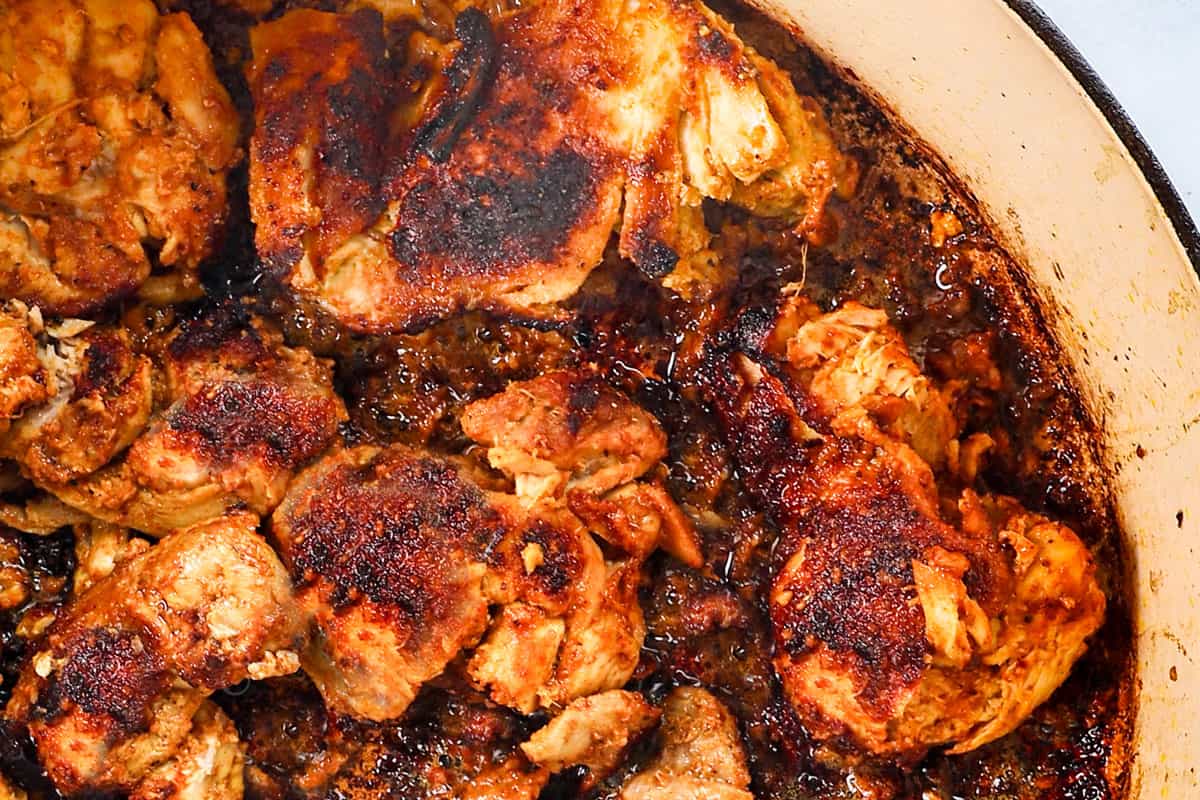
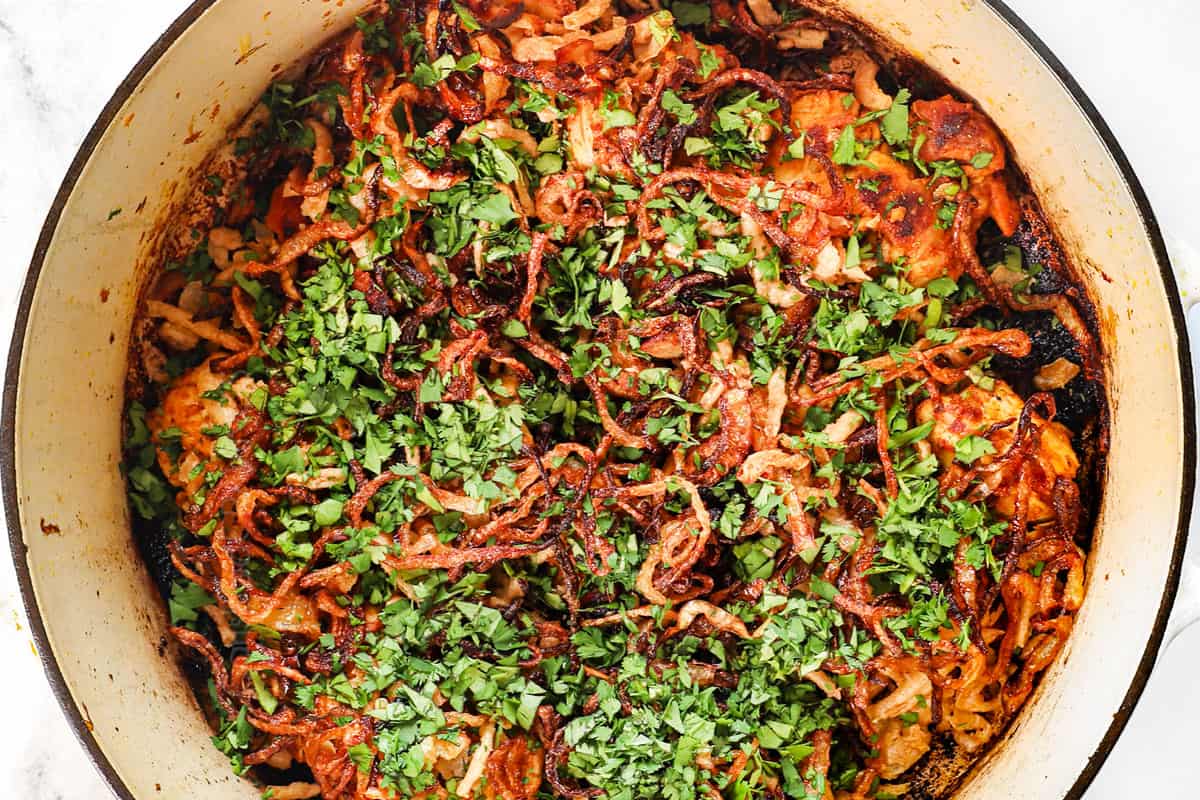
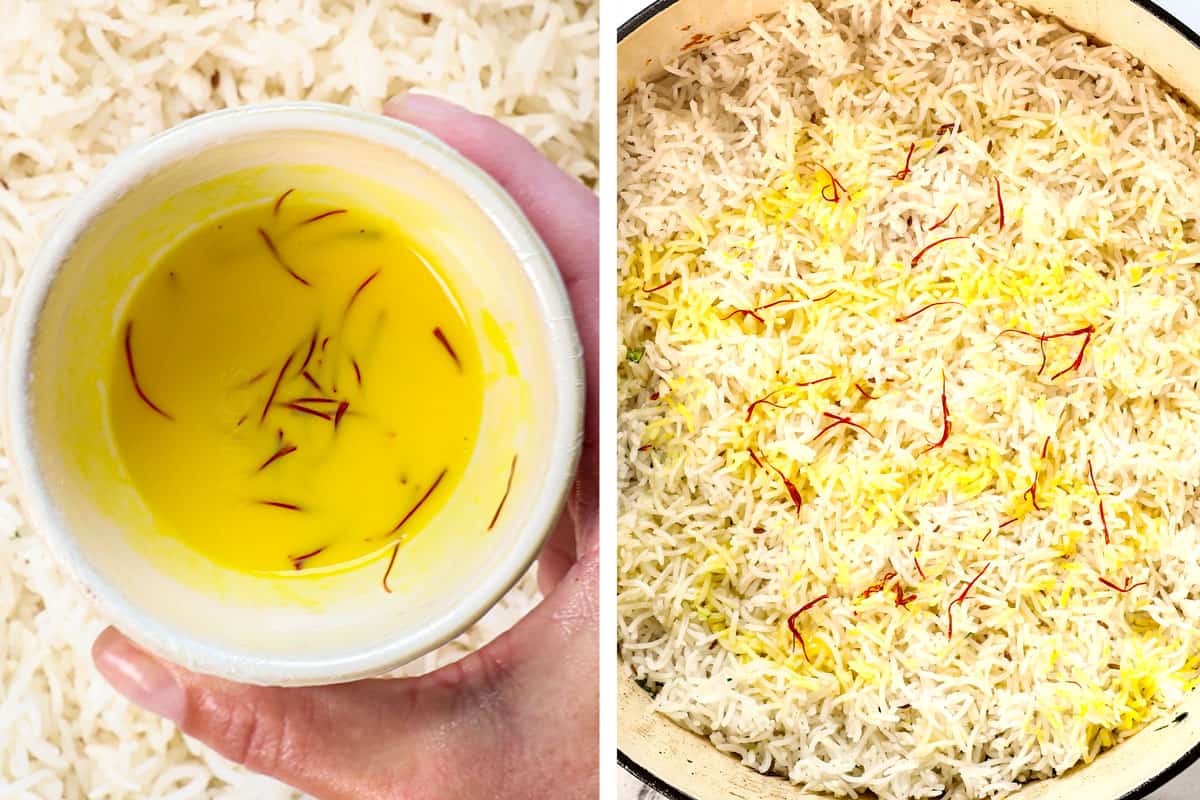
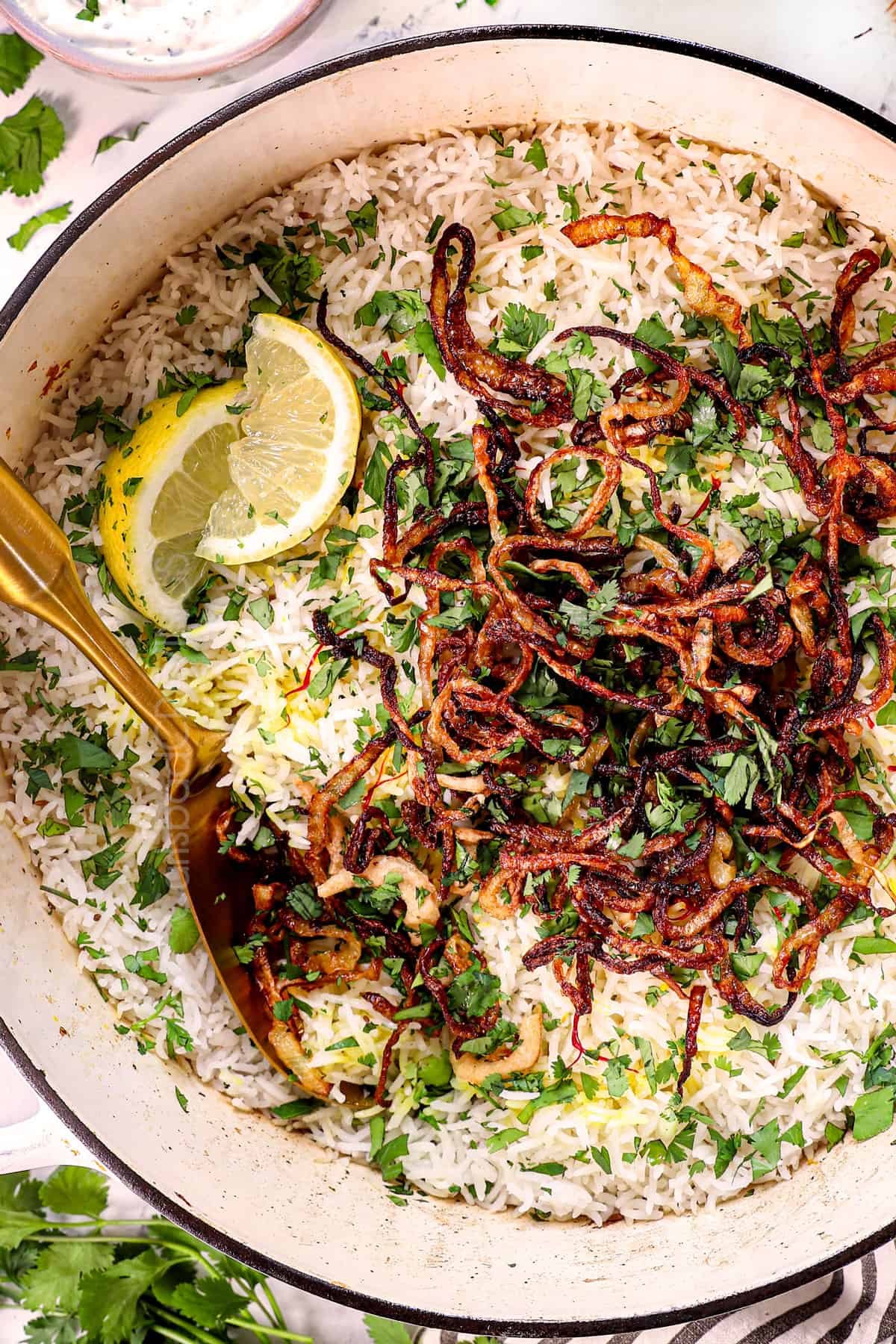

biryani recipe TIPS
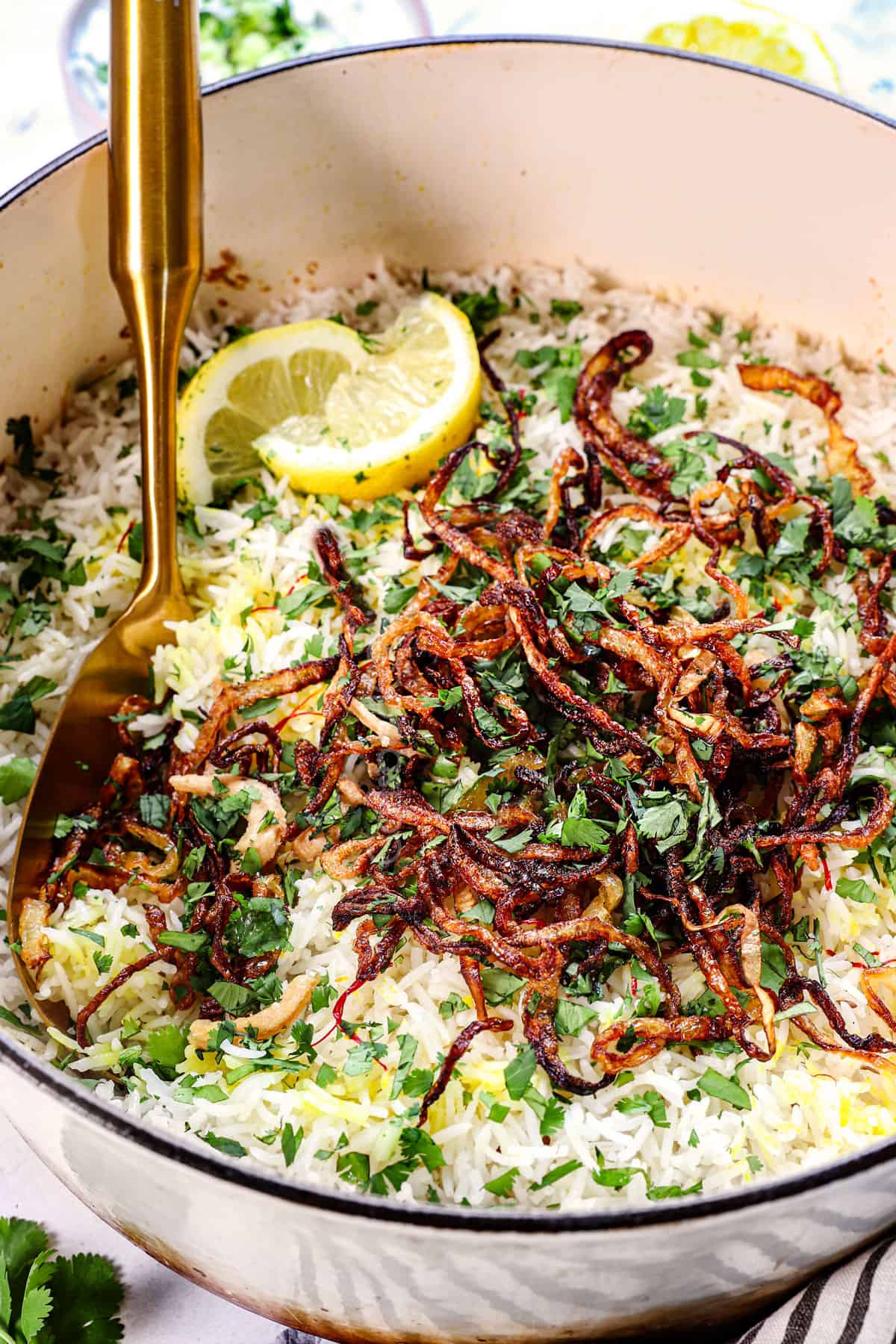

biryani variations
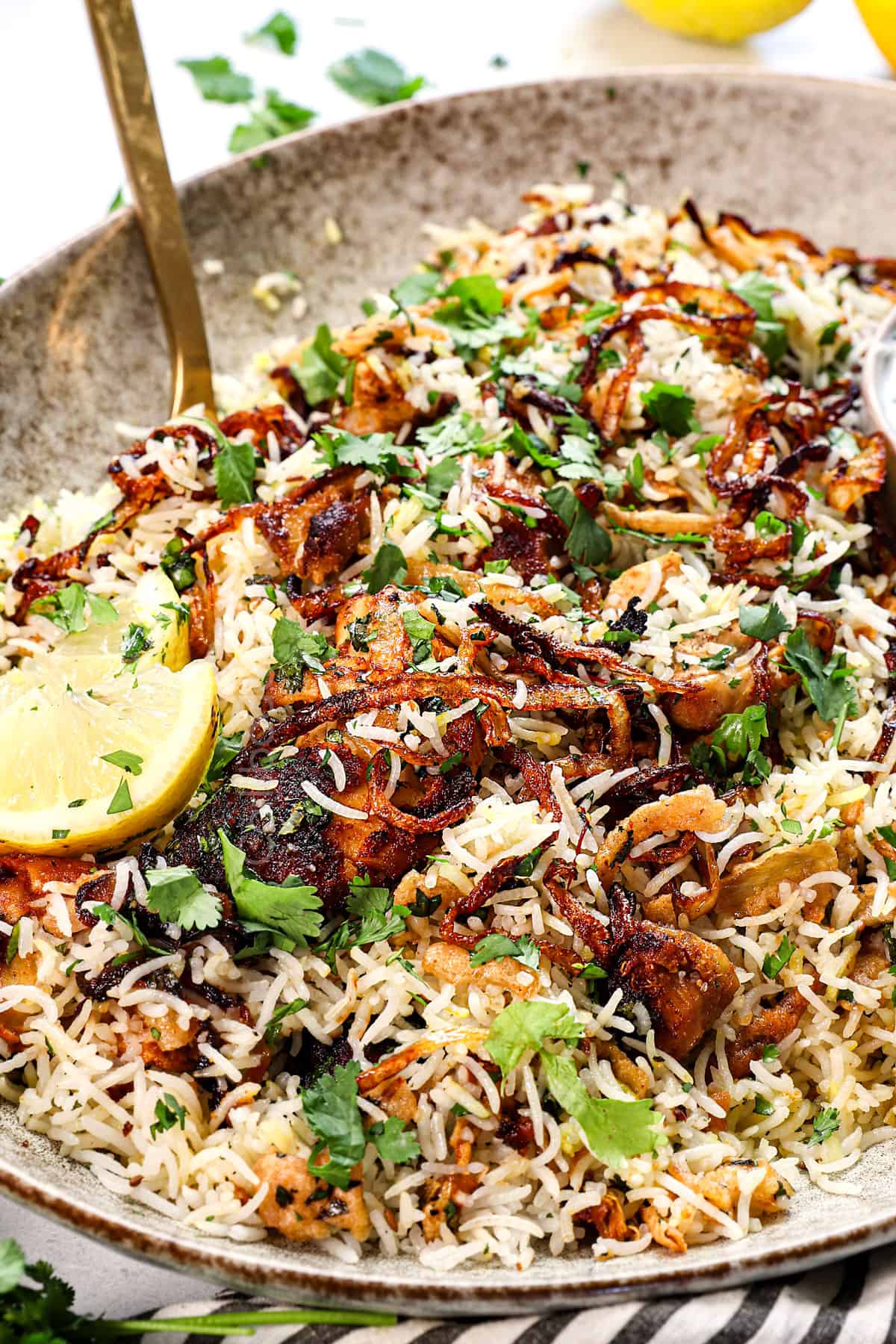

How to serve this Chicken Biryani Recipe
To serve chicken biryani properly and enhance the overall experience, follow these steps:
How are you supposed to eat biryani?
What to serve with Chicken Biryani

How to Make Raita
COMBINE:
–2 cups plain yogurt
–1 ¼ cups finely diced English cucumber
–¼ cup minced cilantro (or 2 TBS mint)
–1 large garlic clove, finely minced
–½ teaspoon ground cumin
–½ teaspoon kosher salt

Biryani storage
Leftovers will last up to 5 days in the fridge in an airtight container. Leftover can be reheated in the microwave for 1 minute, then at 15-second bursts or gently warm in a saucepan over medium heat.
Biryani Recipe FAQs
“Biryani” is pronounced as “beer-ya-nee,” with the emphasis usually placed on the second syllable. The first part sounds like “beer,” though with a shorter “ee” sound, followed by “ya,” similar to the beginning of the word “yard,” and ending with “nee,” which rhymes with “knee.” The correct pronunciation helps to capture the authentic sound of the word, which originates from the Indian subcontinent.
Biryani can be both healthy or unhealthy, depending on how it is prepared and the ingredients used. Traditionally, biryani is made with layers of meat, rice, and a variety of aromatic spices, along with fried onions and ghee or oil, which can make it high in calories and fat. The richness of ingredients like butter, heavy spices, and fried components means that regular consumption of biryani, especially those prepared with a lot of ghee or fatty cuts of meat, may contribute to weight gain and increased cholesterol levels. However, biryani can be made healthier by using lean cuts of meat, reducing the amount of oil or ghee, and adding more vegetables. Using brown rice instead of white rice or controlling the portion size can also make it a more balanced meal. The spices in biryani—such as turmeric, cumin, and ginger—provide some health benefits due to their anti-inflammatory properties. Therefore, biryani can be part of a balanced diet if eaten in moderation and made with healthier cooking methods.
Biryani is special because it combines a rich blend of flavors, textures, and aromas that create a uniquely satisfying and unforgettable dish. It involves a meticulous process of layering marinated meat or vegetables with fragrant basmati rice, cooked with a variety of spices such as saffron, cardamom, and cloves, which infuse each bite with complex, aromatic notes. The “dum” cooking technique—sealing the pot to trap steam—ensures the ingredients meld together perfectly, resulting in tender meat, fluffy rice, and deeply developed flavors.
Biryani also has a strong cultural significance, originating in the Indian subcontinent and evolving into many regional varieties, each with distinct ingredients and preparations that reflect local traditions and tastes. Whether it’s the lavish Hyderabadi biryani or the fragrant Lucknowi version, biryani represents celebration, hospitality, and culinary artistry, making it a beloved dish worldwide.
Chicken biryani has a rich and complex flavor, combining aromatic spices with tender pieces of chicken and fragrant basmati rice. The taste is a harmonious blend of savory and slightly spicy notes, with layers of flavor from spices such as cumin, cardamom, cloves, cinnamon, and bay leaves. The marinated chicken is juicy and flavorful, often with hints of yogurt and herbs like mint and cilantro. The saffron adds a subtle floral note, while the fried onions provide a touch of sweetness and a caramelized depth. Each bite of biryani is a balance of warmth from spices, the richness of ghee or oil, and the bright freshness of herbs, resulting in a mouthwatering and aromatic experience.
Biryani is traditionally cooked by layering partially cooked rice with marinated meat or vegetables, then cooking them together in a sealed pot using the “dum” method. This technique traps steam, allowing the flavors to meld perfectly and ensuring tender, juicy meat and fluffy rice.
Some popular types of biryani include Hyderabadi Biryani, known for its strong flavors and use of saffron, Lucknowi Biryani, which is milder and cooked using the “pukki” method, and Kolkata Biryani, which often includes potatoes and boiled eggs for added richness.
Chicken biryani is made using basmati rice, marinated chicken, a variety of spices (such as cumin, cloves, and cinnamon), herbs like mint and cilantro, saffron, and fried onions. The ingredients are layered and slow-cooked to create a flavorful and aromatic dish.
Cooking chicken biryani usually takes about 1 to 1.5 hours, including the time needed to marinate the chicken, partially cook the rice, and then layer and “dum” cook everything together for the final flavor infusion.
Yes, you can make chicken biryani ahead of time. The flavors often get even better after a few hours, as they meld together. Store the biryani in an airtight container in the refrigerator and reheat it gently, either in the oven or on the stovetop, to retain its moisture and taste.
Basmati rice is used in biryani because of its long grains, distinct aroma, and ability to remain fluffy and separate after cooking. It absorbs the flavors of the spices and meat well, making it ideal for a dish like biryani, where texture and fragrance are essential.
Hyderabadi biryani is unique because it uses the “kacchi” method, where raw marinated meat is layered with partially cooked rice and cooked together under “dum.” It is known for its robust, spicy flavor and is often garnished with fried onions and saffron for extra richness.


Looking for more Indian Recipes?
Check out my Butter Chicken and Tikka Masala
WANT TO TRY THIS Biryani RECIPE?
PIN IT to your recipe BOARD TO SAVE FOR LATER!
FIND ME ON PINTEREST FOR MORE GREAT RECIPES! I AM ALWAYS PINNING :)!
©Carlsbad Cravings by CarlsbadCravings.com
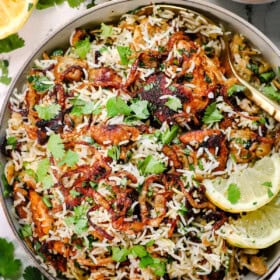
Chicken Biryani Recipe
Save This Recipe To Your Recipe Box
You can now create an account on our site and save your favorite recipes all in one place!
Ingredients
Marinade:
- 1 3/4 lbs (28 oz) bone-in chicken thighs, skin removed (may use some drumsticks)
- 1/2 cup plain yogurt
- 2 tablespoons lemon juice
- 1 tablespoon neutral oil
- 1½ tablespoons freshly grated ginger
- 1½ tablespoons minced garlic
- 1 TB EACH paprika (regular/NOT smoked), garam marsala
- 1½ tsps EACH salt, ground coriander, ground cumin
- 1/2 tsp EACH ground turmeric, cayenne pepper
Par Boiled Rice:
- 8 cloves
- 4 green cardamon pods
- 1 star anise
- 1/2 teaspoon cumin seeds
- 1 3-inch cinnamon stick
- 2 cups uncooked long-grain basmati rice
- 1½ tablespoons salt (table salt)
- 4 dried bay leaves
Crispy Onions
- 2 yellow onions, halved, thinly sliced
- 1/2 cup high smoke point oil (avocado, canola, or vegetable)
- 4 tablespoons ghee (or sub unsalted butter)
Saffron:
- 1 teaspoon saffron threads, loosely packed
- 2 tablespoons warm milk
Layering
- 1/4 cup chopped cilantro (measure after chopping)
- 2 tablespoons chopped mint leaves (measure after chopping)
- 1/3 cup ghee (or sub unsalted butter), melted
Garnish:
- Crispy onions (above)
- Chopped cilantro
- Raita or Yogurt for serving- A MUST!
Instructions
- Note: This recipe uses two large pots to speed up the process. If you don't have two large pots, cook the rice first, then the onions and chicken.
- Marinate Chicken: Mix the Marinade ingredients (except for the chicken) in a large bowl. Add the chicken and turn it to coat. Marinate in the refrigerator for 2-24 hours. Bring to room temperature for 30 minutes before cooking.
- Rinse Rice: Rinse the rice until the water mostly runs clear, then soak it in a bowl of water for 30 minutes. Drain after 30 minutes in a fine mesh sieve. Meanwhile, make the onions. You can boil the water for the rice while the onions are finishing.
- Crispy Onions: While the rice is soaking, heat a large Dutch oven over medium heat with the oil and ghee. Add the onions and shallow fry, stirring often so they cook evenly, until golden brown and beginning to crisp up, about 20 minutes. Take care not to overcook; they can quickly become burnt and bitter, especially towards the end. Transfer to paper towels to drain, but don’t wipe out the pan; set aside. The oil will be used for the chicken.
- Toast Spices: Heat a separate large stock pot or Dutch oven over medium-high heat (whatever pot you’re going to cook the rice in). Add the whole spices except for the bay leaves (cloves, star anise, cardamom pods, cumin seeds, cinnamon sticks) and toast for 1-2 minutes, until fragrant.
- Par-Boil Rice: Add about 7 cups of water to the toasted spices. Bring to a roaring boil, then add the salt and bay leaves. Add the drained rice and return to a roaring boil. Once it comes to a boil again, boil for 3-4 minutes (NO MORE) until the rice is partially cooked and still firm in the middle – it shouldn’t get mushy when pressed. Drain immediately, leaving the spices in the rice. Add freshly cracked salt and pepper to taste when cool enough, then set aside.
- Saffron: When you're ready to cook the chicken, add the saffron strands to the warm milk to soak for about 10 minutes.
- Chicken: Drain all but 2 tablespoons of oil/ghee from the onion pot and heat over medium-high heat. Add the chicken and its marinade. Cook on medium heat for 8 to 10 minutes, turning halfway through (the chicken does not need to be cooked through).
- Layer: Remove the chicken from the heat. Scatter half of the onions over the chicken, followed by the cilantro, mint, and rice. Drizzle the saffron milk and melted ghee evenly over the rice.
- Cook: Check the rice for doneness so you know how long it needs to steam (it may have cooked more while resting). Cover and cook on low for 15-20 minutes, until the rice is cooked but not mushy. Remove from the heat and rest (lid on) for 10 minutes.
- Garnish: Garnish with the remaining onions and desired cilantro and mint. Serve hot, using a large spoon to scoop up the layers in one spoonful.
Notes
- Ghee: This is a type of clarified butter that is commonly used in Indian cuisine prized for its rich, nutty flavor and high smoking point. It is made by simmering butter, which causes the water content to evaporate and the milk solids to separate. The clarified butter is then strained, resulting in a golden, translucent liquid known as ghee. Purchase ghee at the grocery store or on Amazon here.
- Saffron: You may purchase on Amazon here.

Did You Make This Recipe?
Tag @CarlsbadCravings and Use #CarlsbadCravngs
Leave a Review, I Always Love Hearing From You!
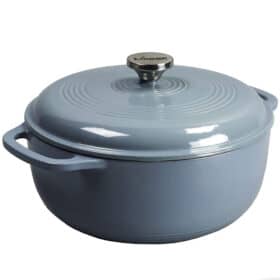
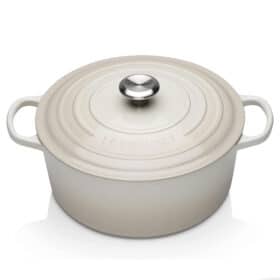




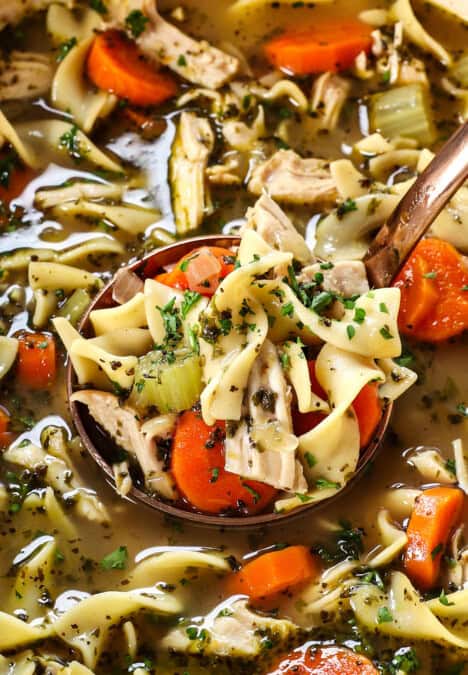
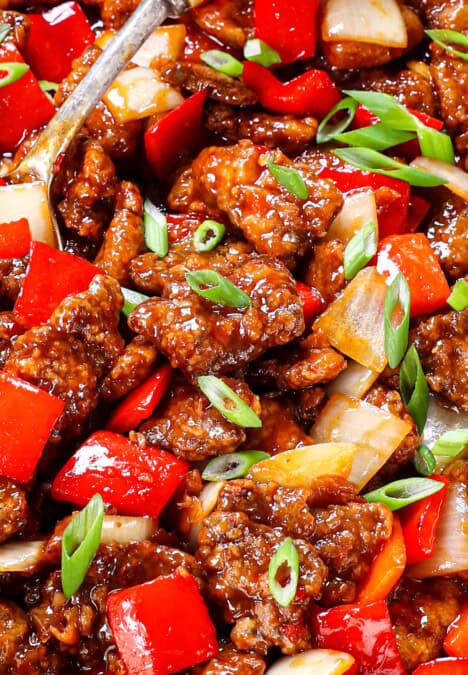

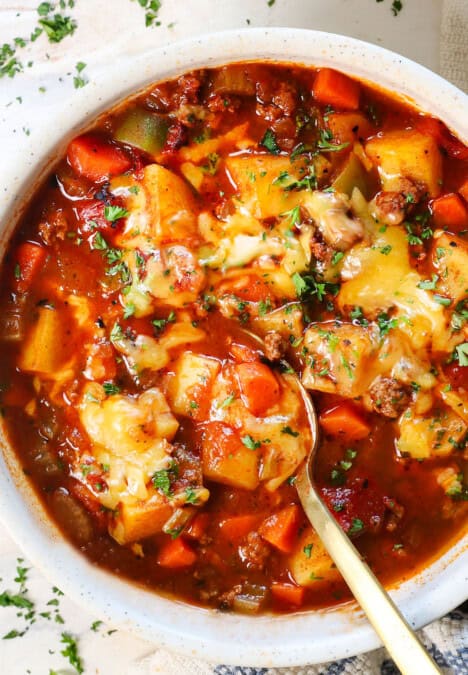























Karleen Corbeg says
This recipe was amazing!!! I’ve never made Chicken Biryani until now. It’s a very time consuming process as there are so many steps involved. I marinated my chicken and made the raita the night prior which made the night of the meal a bit less time consuming. I followed your recipe exactly as written. Every bite was a flavor explosion. Even made my own ghee to save money. This can be a costly dish to make if you don’t have the whole spices and saffron but it’s so worth it.
Jen says
Hi Karleen! Wow, it sounds like you know your way around the kitchen! I am so glad you enjoyed the amazing flavors this recipe offers!
Jeanne says
I only have ground saffron on hand, how can I incorporate it into this recipe?
Jen says
Ground saffron loses a lot of the flavor that the saffron threads offer so you would have to increase the amount of ground saffron that is called for in this recipe. But definitely try the saffron threads to get the best flavor of this dish. 🙂